Victorian writer RM Ballantyne could never forget his experience of life on the Bell Rock lighthouse which inspired his famous adventure story.
The Bell Rock has sat on a rocky reef 11 miles off the coast from Arbroath since 1811.
Fifty years after it was built, RM Ballantyne, a writer of very popular children’s books in his day, decided to spend two weeks there.
He painted and recorded nature while living with the three men who manned this remote and perilous outpost.
His account from May 1865 shows the conditions – and the heartbreak – they had to endure.
Ballantyne begins his account at night
One of the lighthouse-keepers is on solitary duty above him, tending to the lantern on the top floor of the lighthouse.
The writer imagines the keeper thinking of his wife and children.
The three keepers on Bell Rock – Joseph Agnew, William Wither and David Laidlaw – work six-week stints, alternating with just two weeks’ leave ashore with their families.
Getting to the Bell Rock has been perilous.
Ballantyne had to begin his journey from Arbroath at 2am, arriving at the rock three hours later.
Boats can approach Bell Rock only at high tide and then must wait for low tide so visitors can disembark and climb up the 25 steps of the metal ladder.
He describes the living conditions on the six-storey building.
The kitchen and main living room is on the third floor – the first and second storeys are used for storage.
There is a coal-fired grate for cooking and a pump to draw water from tanks below.
The three keepers sleep on the fourth floor in what Ballantyne calls ‘roomy’ berths.
The lighthouse’s guest writer is given the fifth floor – an oak-lined library furnished with a Turkish carpet, a bookcase, and a marble bust of the lighthouse builder Robert Stevenson.
This surprisingly grand room is used to receive the Commissioners (inspectors) of the Northern Lighthouses when they visit.
The lighthouse’s lantern on the sixth storey is lit by oil-powered argand lamps.
A clockwork mechanism makes the four-sided frame revolve slowly and flash every two minutes, also working a regular small bell which assures the duty keeper that everything is working correctly.
Throughout his stay, a picture emerges of the men who are living there.
Ballantyne writes that all the men are teetotallers and ‘kindly fellows’ who entertain themselves by reading, smoking and playing drafts.
Sometimes they have musical evenings when William Wither plays the accordion and the fiddle.
Every Sunday the Bible comes out and they hold a small service to mark the Sabbath.
The men took turns to cook at Bell Rock
Irish stew, roast beef, potatoes, plum pudding that are on the menu throughout the fortnight, with buttered toast a particular treat.
Ballantyne has brought some coffee essence which they all enjoy in the evenings.
The rock is completely submerged at high tide, and so the men watch the sea ‘like a cat watches a mouse’ to find the right time to get outside for some exercise for as long as possible before the waters ‘order them back into prison’.
Ballantyne uses these times to paint and sketch.
On one fine day he even plunges into the sea for a dip.
Sometimes he gets the timing wrong, once being nearly blown away attempting to pencil-sketch the heightening sea as the waves rise to 15 feet.
Over the fortnight he experiences most of the hours of the day outside, and most weathers too.
Even during the warm and sunny days in the early part of his stay he is amazed at the size of the large green breakers that crash against the tower, making him wonder how it could withstand real storms.
He is about to find out.
He recorded the natural world
He is constantly in awe of Bell Rock and this makes him reflect on the lighthouse’s role one moonlit night: “It felt romantically dismal to stand above the rock which has cost so many lives in days of old; and it was satisfactory to look up…and see the bright light blazing…giving guarantee that there shall be no more wrecks there now.
“It is indeed a light in a dark place.”
The next day fog descends, and the lantern is replaced by great clanging bells that sound out every half-minute, keeping Ballantyne awake all night.
The writer records the natural world which is all around them.
The keepers tell stories of thousands of disorientated land birds such as blackbirds, thrushes, larks, crows and owls which are drawn in by the tower’s lantern to take refuge in foggy weather.
The men occasionally catch them to supplement their diet.
Ballantyne is much more tender-hearted, one day trying unsuccessfully to revive an exhausted swallow.
“I warmed it at the fire, gave it a drink of water out of my mouth, and put it in a cupboard with some crumbs and water,” he said.
William Wither suggests he should instead kill it and stuff it.
The writer is also fascinated by a spiky, barrel-shaped sucker fish which fastens itself to the rock pools.
One day he catches one, lays it on a rock, and quickly sketches it before releasing it.
One windy day there is an extraordinary sighting in the stormy sea: “Agnew got a fright today by seeing what he imagined to be a man.
“It turned out to be a seal with a large white skate or turbot in its mouth, which at a distance looked like a man’s naked shoulders.”
There are occasional glimpses of the outside world.
The lighthouse-keepers manage to buy some codling and pollock from a visiting fishing boat which also drops off some mail – much to Ballantyne’s delight.
“News from home!
“I had not heard of the outer world since Friday last.
“Three days – it seems an age in these times of steam and telegraph!”
His experience stayed with him
At the end of his stay a gale arrives which means Ballantyne leaves Bell Rock a day later than expected.
Food is running low.
All they have left to eat are ship’s biscuits until new supplies arrive.
He nearly doesn’t get away.
A hair-raising attempt to reach them by the relief boat fails as ‘monster billows’ overwhelm the rock and threaten to break the vessel in half.
The boat and its crew retreat to Arbroath.
The men of the lighthouse become concerned that its repeated and determined attempts to land at Bell Rock in terrible conditions meant that its crew was bringing bad news about their families.
With some good reason.
Earlier the previous year, William Wither was told that his only child was ill.
Having to wait nearly a week for a boat, he learned when he finally got ashore that his boy had died two days previously.
As soon as the seas are calm, Ballantyne is on the boat heading for shore.
His respect for the lighthouse stays with him: “I did not think that any building made by man could have withstood the terrific sea that has been swirling and roaring round and pounding against us.”
RM Ballantyne went on to write an adventure story for young people called The Lighthouse – one of over 100 books he wrote in his lifetime.
His most famous book was Coral Island, which was the inspiration for William Golding’s Lord of the Flies.
Ballantyne continued to paint, and some of his watercolours were exhibited at the Royal Scottish Academy.
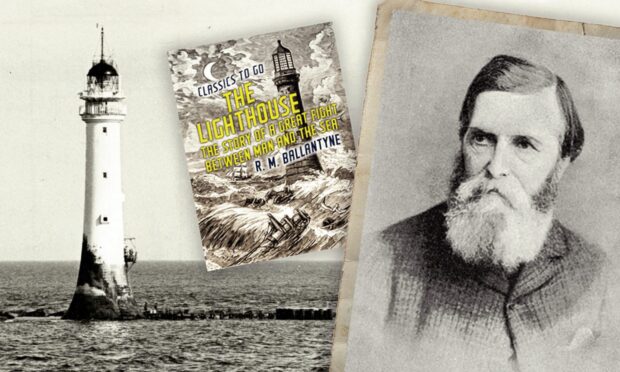
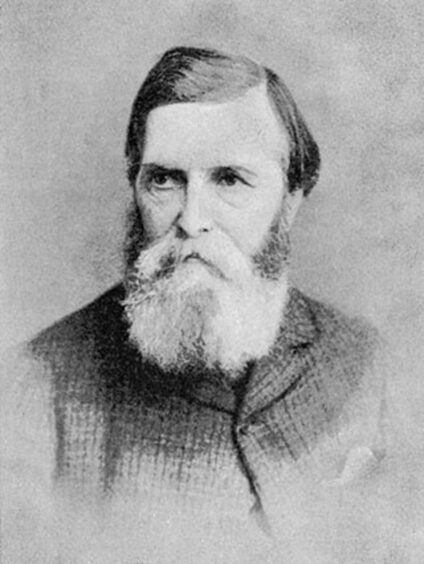
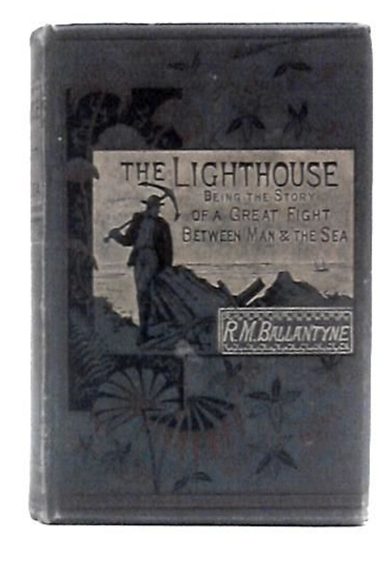
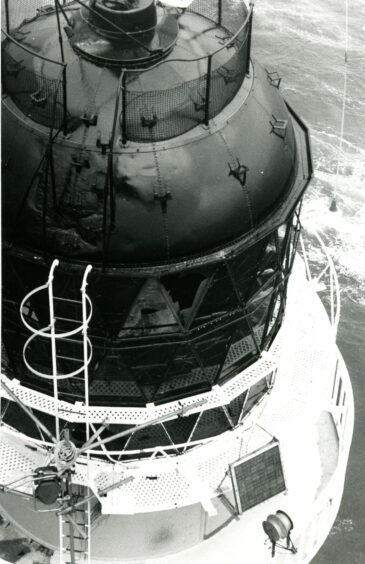
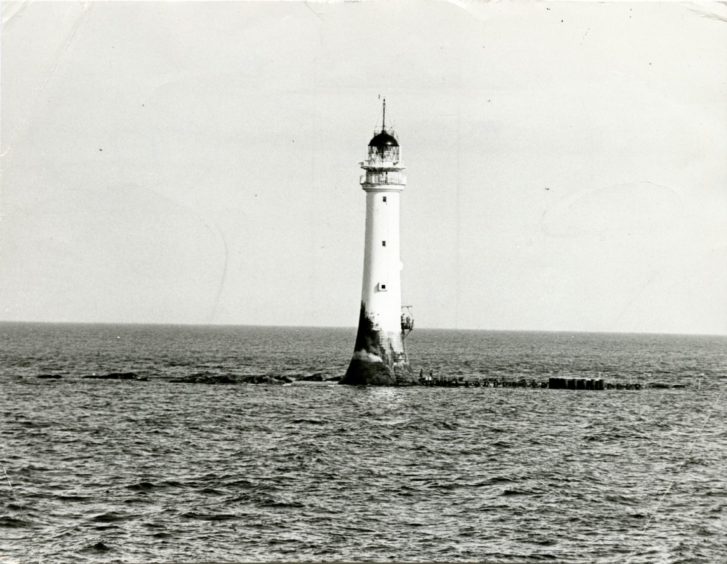
Conversation